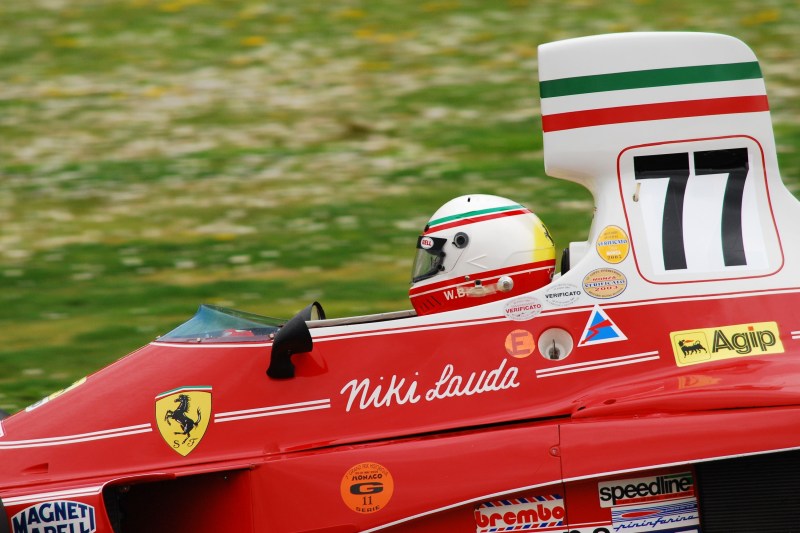
For those who are somewhat unfamiliar with Formula 1 racing, Niki Lauda (1949-2019) is a legendary driver and a three-time World Driver’s Champion. In addition to being an exceptional driver, Lauda campaigned heavily throughout his career for improvements in driver safety.
The epitome of Lauda’s desire for improved track conditions was reached in August 1976 at the infamous Nurburgring Nordschleife, affectionately known as The Ring. In the last few decades, it has become the ultimate proving ground for every hyper-Porsche and 200 mph Corvette around.
Niki crashed after attempting to get his fellow drivers to boycott the race due to bad weather and questionable track safety. Lauda survived and recovered from that crash, and for the first time ever, the helmet that he wore that faithful day can be yours on May 4th at Bonhams Miami Auction.
Niki raced in the Italian Grand Prix 40 days after his accident
Defending his title in 1976, Niki Lauda had become the supreme racer of his time. Despite his (and other drivers’) protests, the race at The Ring was not postponed or canceled. It only took two laps for Lauda’s fears to be proven right when his car lost control and smashed into the barrier, turning the machine into nothing more than mangled bits of metal, fire, and smoke. The force of the hit caused Lauda’s helmet to fly off, and thanks to the speedy intervention of his fellow drivers, Niki was pulled from the wreckage.
Lauda suffered severe burns and respiratory damage in the crash, and many feared he would be done for the season or possibly even for his career. Yet, with the heart of a champion, Lauda persevered and returned to the track at the Italian Grand Prix a mere forty days after his gruesome incident.
The day after that triumphant return, he qualified in an incredible fifth place, and after 52 laps of F1 racing just weeks after near death, Lauda managed to place fourth in that race. Lauda’s harrowing adventures during the 1976 Championship, when he was narrowly beaten by British driver James Hunt, inspired Ron Howard to retell that magical year in his 2013 movie RUSH. Lauda would go on to redeem himself, winning his second championship the following year in 1977 and then his third in 1984.
Niki Lauda’s helmet is expected to sell for up to $60,000

Of the auction, Niki’s son, Lukas Lauda, said:
“We are delighted that our father’s legacy continues to provide help and assistance to those in most need. The challenges faced by UNICEF in providing humanitarian aid to children worldwide are enormous, if we can make a small contribution towards improving opportunities for others; we are delighted to do so.”
Taking things a step further, James Garguilo, Cars Automobilia Specialist for Bonhams, also commented:
“We are privileged to present this historically significant helmet as a testament to Niki Lauda’s legacy as a driver and as a champion for driver safety. His unyielding determination and sheer courage altered the trajectory of racing history.”
The helmet is expected to sell for between $50,000 and $60,000. A portion of the proceeds will be donated to the Lauda family’s chosen charity, UNICEF. If you’d like to be the big winner, bring your wallet on Saturday, May 4th, to the Formula 1 Crypto.com Miami Grand Prix 2024.



